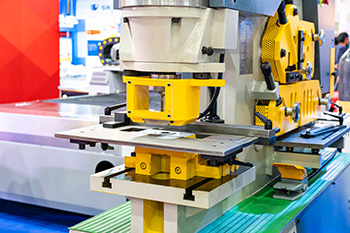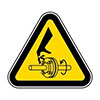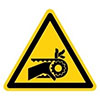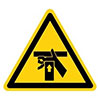Machine safeguarding principles – Risk factors

Understanding the risk factors of machinery operations and the general principles of machine guarding will help you complete your own evaluation process and in determining where additional safety controls are needed.
Understanding and controlling the hazards related to machinery operations is not only good business, but also required by law. Effective machine guarding is essential where the injury-causing hazards cannot be eliminated or reduced to a safe level. To ensure adequate guarding, it is important to know where the risk factors occur, relative to machinery operations, and to understand what hazards are created by the associated actions and movements.
Risk factors - Operations
There are four key operating elements to consider when evaluating the need for machine guarding:
The point of operation: This is where the primary mechanical work of the machinery takes place, such as cutting, grinding, bending, pressing and punching. It is a primary source of injury potential, especially for the machinery operator.
Power transmission: This encompasses all the elements that are used to mechanically transfer power from the source to the point of operation and related components. It may include belt drives, screw drives, gears, pulleys, rotating shafts, chains, flywheels, pistons and similar moving parts. Because these may be away from the point of operation, they are often the source of injury to others in the work area and may be overlooked.
Contact and emissions exposures: Some machines operate at high temperatures, have sharp surfaces, corners, or protruding parts, produce elevated noise levels, release steam or pressure, or may involve the use of chemicals, generate radiation exposures or produce unsafe atmospheres.
Release or ejection of materials or component parts: When high amounts of force, pressure or speed are involved in machinery operations, it can result in work pieces, waste or broken parts being dangerously projected from the machine.
Risk factors - Actions and motions
Actions: Tasks such as cutting, grinding, punching, bending, shearing, forming, or joining. The primary exposure typically occurs when the worker is inserting, holding or removing materials and often leads to a crushing injury, severe laceration or amputation. Actions that involve rotation, such as a saw, drill or lathe, have the increased risk of pulling the worker into the hazard. Actions that involve high speed or force can also result in materials being thrown from the machinery with enough power to cause a serious injury or fatality. In these situations, the guard should be capable of both preventing contact and containing possible projectiles.
Motions: Can be found in multiple operating areas of the machine and are generally grouped as rotating, reciprocating, and transverse.

Rotating is movement in a circular motion and is especially hazardous because even a smooth shaft at low speeds can grip loose clothing or hair, and at high speeds can quickly force a body part into a dangerous position. Sprockets, spokes, set screws or projections on rotating parts add an additional risk factor. Rotating parts moving in an opposite direction, such as in-feed rollers or gear drives, create a pinch point that can cause serious injury themselves or pull a worker into a greater hazard area.

Transverse is motion in a linear direction, such as a drive chain or belt, which may have burrs, seams or sharp edges that can lead to severe cuts. When transverse motion includes a rotation element, such a drive pulley or gear, it creates an in-running pinch point.

Reciprocating is an up-and-down or back-and-forth motion that presents the risk of a person or body part being caught between the moving element(s) and a fixed object. This can lead to a crushing injury or blunt force trauma.
While machinery may arrive with guarding from the manufacturer, it is critical to conduct your own evaluation of the potential hazard areas and existing guards to make sure they effectively protect both the operator and others in the work area from injury. It is always best to start with the equipment manufacturer’s operation and user manuals; however, understanding the risk factors of machinery operations and the general principles of machine guarding will guide you in completing your own evaluation process and in determining where additional controls are needed.
